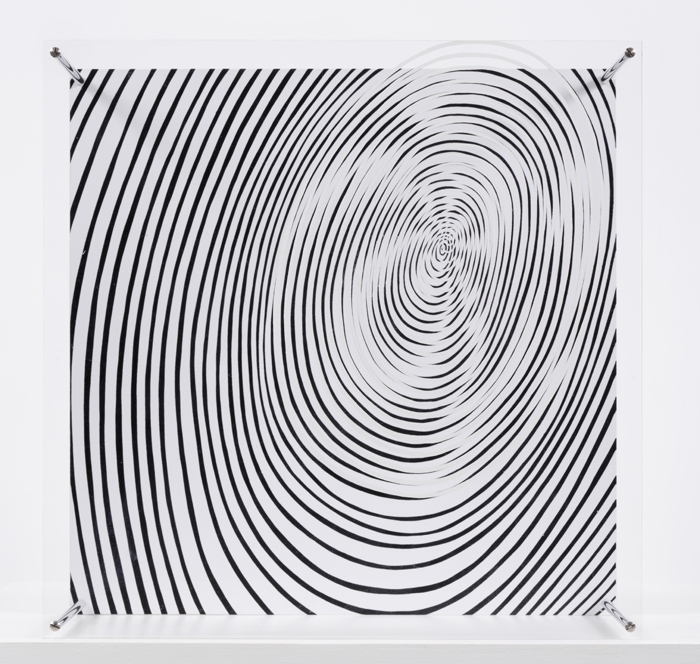Those unfamiliar with Jesús Rafael Soto may be intrigued to learn that his works have been known to induce vertigo and dizziness. Considering that the Venezuelan-born artist, who died in 2005, is regarded as fundamental to the development of kinetic art, it is even more surprising to discover that his reliefs and sculptures rarely move; their shimmering, vibrating and rippling is illusory, generated by the viewer’s own movements in tandem with the artist’s perceptual ruses. In Bilbao the full scope of Soto’s output is covered by this generous 60-work retrospective, which tracks his ocular investigations over five decades. With so many Sotos crammed into a single space, the giddying show leaves you sensing that the French critic Jean Clay was on to something when he claimed, in the first issue of 1960s art magazine Robho, that ‘Kineticism is not about “things that move”, but the awareness of the instability of the real’.
Soto’s association with kineticism stemmed from his inclusion in the pivotal 1955 exhibition Le Mouvement, at Galerie Denise René in Paris. Yet, wary of labels, he resisted being identified with any movement. His small wall-based works from this period are more closely aligned to Op art (though he refused to participate in moma’s fabled 1965 exhibition The Responsive Eye). Take the dazzling concentric patterns of La Spiral (The Spiral, 1955), or the fluttering geometries of Structure cinétique (Kinetic Structure, 1955), which utilise interference patterns on Perspex overlays to create disorienting visual effects. Soto ran and ran with this concept, achieving similar outcomes with assorted combinations of wires, rods and threads set against striated supports. Fundamental to all these propositions is the interplay of lines – a simple conceit resulting in considerable optical complexity.
The denouncement of Op art and kineticism as frivolous was of little consequence to Soto, whose practice thrived on intellectual rigour. As he explained in 1974: ‘Art should evolve with the same seriousness as philosophy, mathematics, and scientific research’. And yet, as retinal fatigue sets in, there’s a niggling feeling that perhaps Soto’s dissenters were right. Nowhere is this felt more than in his seductive walk-in sculptures begun in 1967, which he called Penetrables. The experience of walking through the curtain of suspended rods in Penetrable blanco y amarillo (White and Yellow Penetrable, 1968) feels as hollow as the Perspex cube into which you are led. The initial radicalism of these works has evidently faded over the decades.
Conversely, Soto’s attempt to represent movement, vibration, light, space and time – or at least the relationships between them – reached its pinnacle with his Progressions and Virtual Volumes series. Floor-based sculptures such as Doble progresión azul y negra (Blue and Black Double Progression, 1975) and Duomo centro rosso (Red Centre Dome, 1997) appear to dematerialise as ascending and descending rods mingle in a hallucinatory sequence of flickering undulations. In 1965 Soto attached small black-and-white squares to a column of pinstriped rectangles. As you approach the wall-based work, the protruding shapes shimmer and vibrate. Soto repeated this stratagem on varying scales, culminating in 1996 with a huge version incorporating differently coloured squares. In contrast to the visual befuddlement experienced elsewhere, the appearance of movement in these untitled works is slight and genuinely startling. As you sway, marvelling at the optical effect, you begin to become acutely aware of your own embodied condition – every quiver and micromovement. John Cage taught us that there is no such thing as silence; similarly, Soto’s most affecting works reveal the elusiveness of stillness and the ubiquity of motion.
Soto. The Fourth Dimension at Guggenheim Bilbao, 18 October – 9 February
From the December 2019 issue of ArtReview
